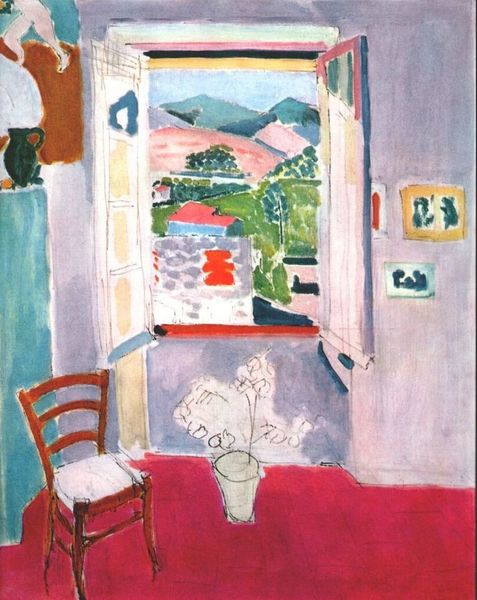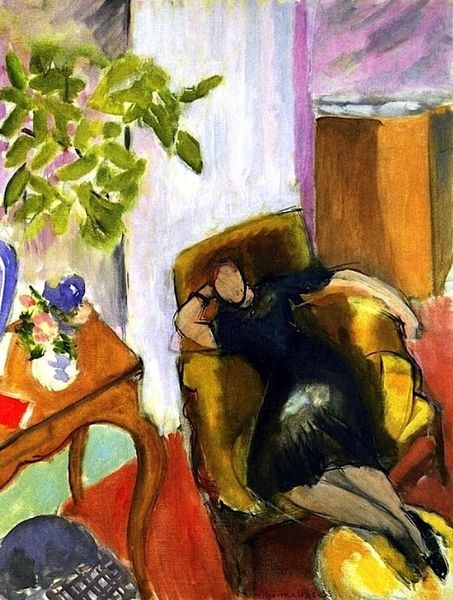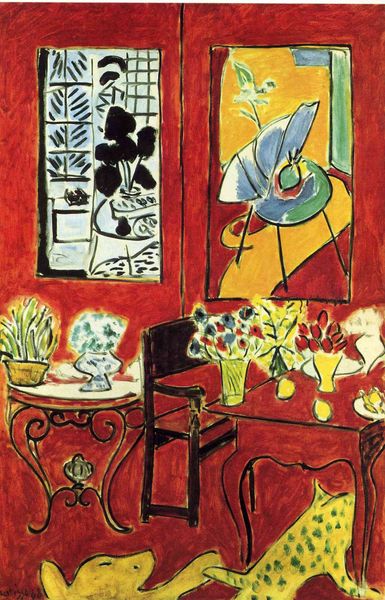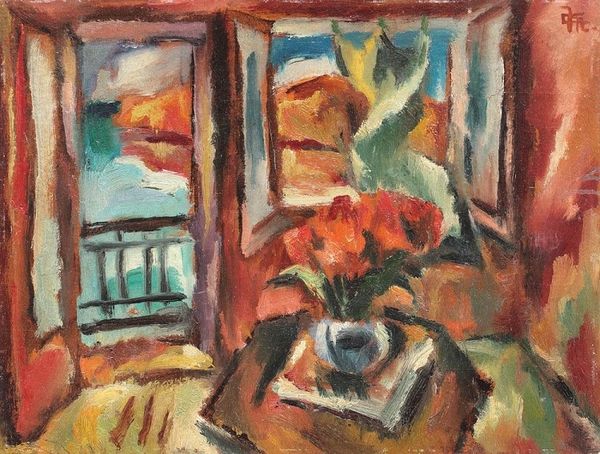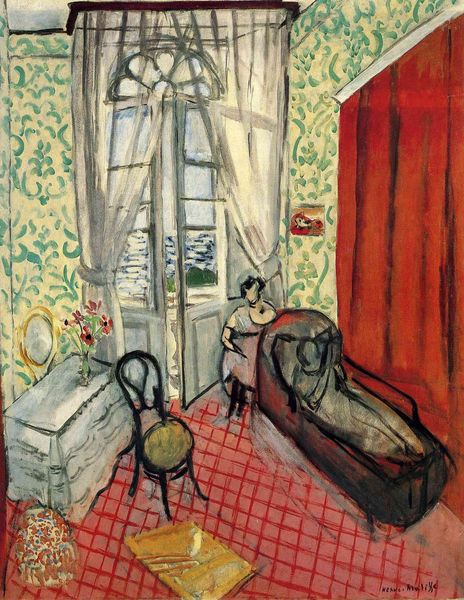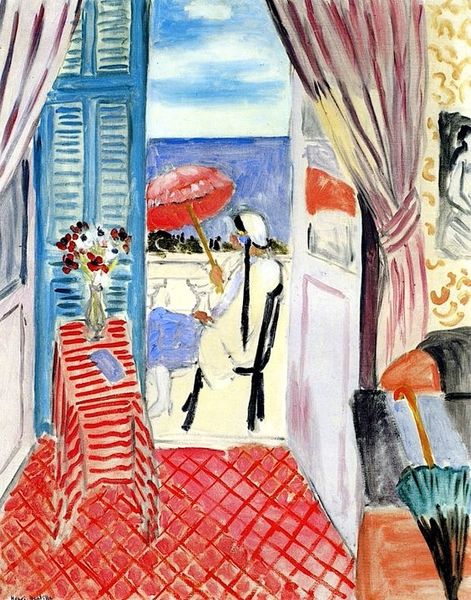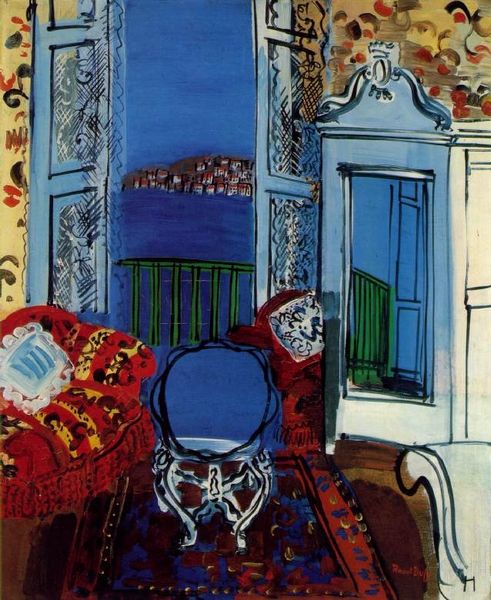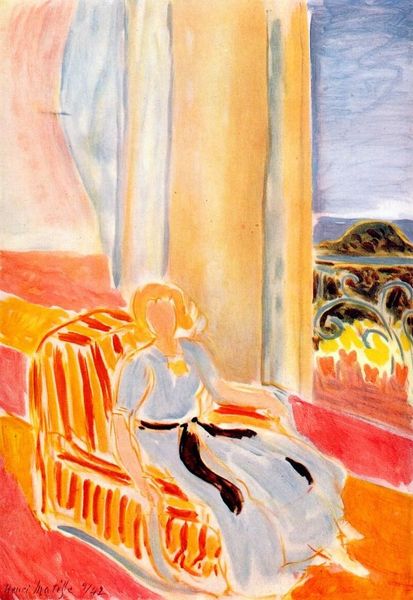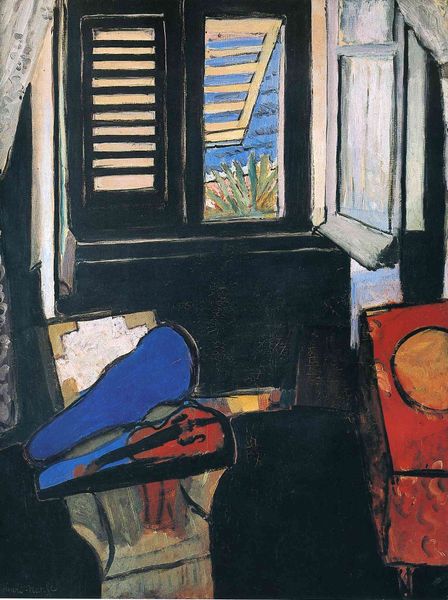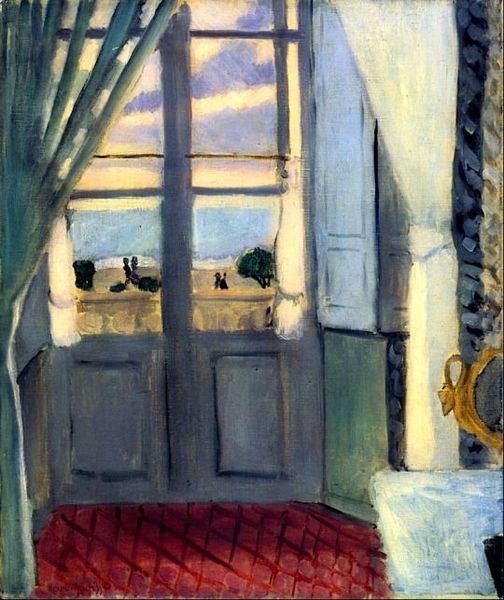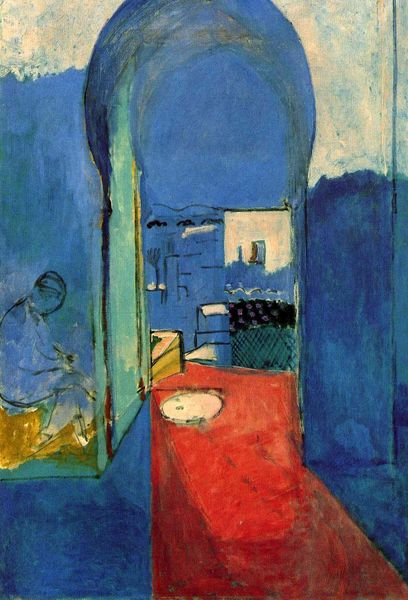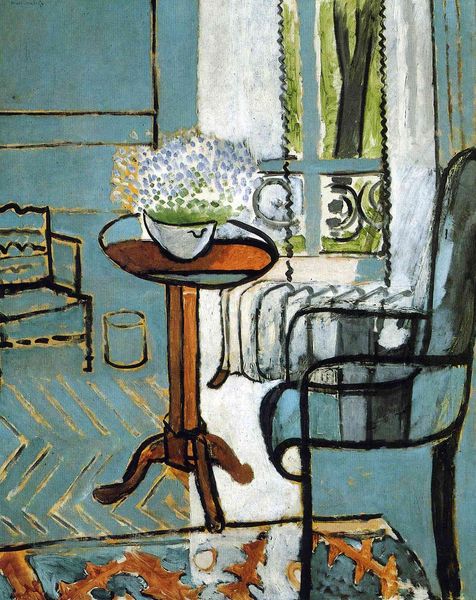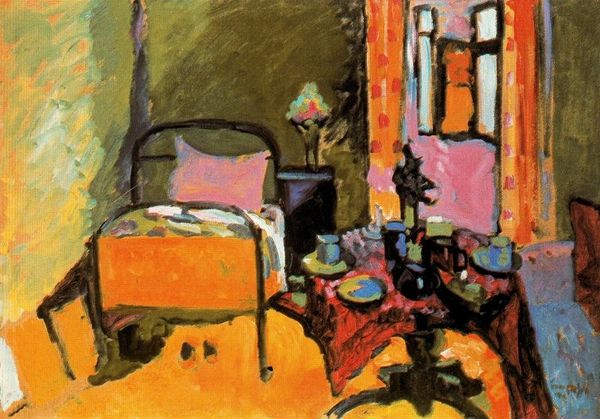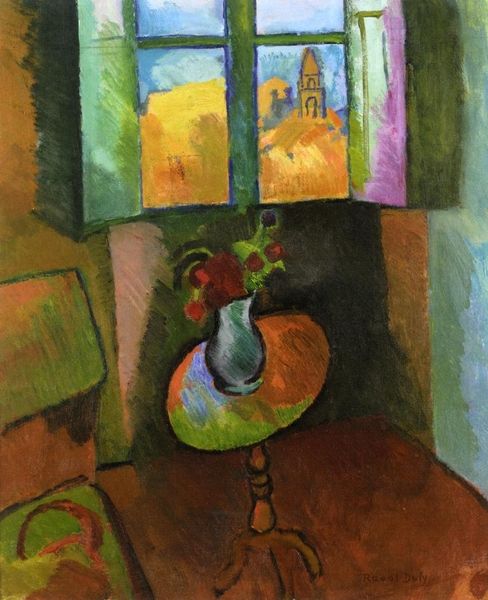
photography
#
still-life
#
abstract painting
#
canvas painting
#
photography
#
handmade artwork painting
#
oil painting
#
fluid art
#
acrylic on canvas
#
painting painterly
#
central focal point
#
portrait art
#
fine art portrait
Copyright: Henri Matisse,Fair Use
Curator: This is Henri Matisse's "Interior," painted in 1940. At first glance, the eye is immediately drawn to the red armchair, isn't it? Editor: It feels almost claustrophobic, in a way. That stark black void at the bottom contrasts intensely with the sun-drenched view through the open window, creating a sense of tension between interior confinement and exterior freedom. It evokes the tumultuous atmosphere of wartime France. Curator: Indeed. Look how Matisse orchestrates color. The bold reds – the chair, the window frame, even the suggested red blossoms visible through the window– are offset by cooler blues and greens. There’s a real dialogue happening between warm and cool tones. Editor: And consider the context—1940, France occupied by Nazi Germany. An artist choosing to depict a comfortable domestic scene, but with these hints of unease, what is he trying to say about resilience, perhaps? A longing for normalcy amidst crisis, captured in something as simple as a vase of flowers. Curator: A formal perspective would consider how those blocks of color create planar relationships within the space of the canvas. The simplification of forms reduces the scene to its essence, drawing focus onto the interplay between shapes and colors rather than representational accuracy. See how he flattened space in some areas versus others? Editor: But even that formal simplicity feels laden with meaning. That stark geometry, in light of the historical backdrop, speaks volumes. Was Matisse consciously commenting on the disassembling or dehumanization occurring in Europe at this time through deconstruction of form? Curator: Well, one can certainly read it that way. I, however, enjoy getting lost in the color interaction on its own accord, divorced of the narrative. But perhaps we are each drawn to aspects that hold the most sway. Editor: Precisely. Ultimately, Matisse offers us not just a still life, but a moment frozen in time—a fragment of history that still resonates profoundly today.
Comments
No comments
Be the first to comment and join the conversation on the ultimate creative platform.
